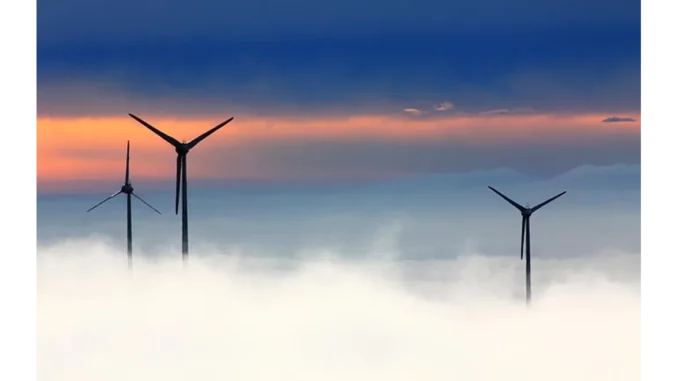
As nations worldwide grapple with the escalating challenges of meeting energy demands while mitigating climate change, innovative projects are emerging that promise to reshape the renewable energy landscape. Among these groundbreaking ventures is Dogger Island, an ambitious artificial island project poised to become a cornerstone of renewable energy in Europe. In a recent discussion with Maria Hendriks, an engineer with Energinet, a key partner in the Dogger Island initiative, the project’s visionary scope and potential impact were vividly outlined.
Ensure your development is safe from flooding. Learn how Focus360 Energy can help.
Meeting Maria at Energinet’s headquarters in Denmark was an enlightening experience, her enthusiasm for Dogger Island was unmistakable. “This is not just a project; it’s a vision for the future of energy in Europe,” she confidently asserted. Maria’s involvement with the project from its early days has given her a front-row seat to witness its evolution, which promises to redefine the boundaries of renewable energy capabilities.
The concept of Dogger Island is visionary in its ambition and scope. Strategically located on the Dogger Bank in the North Sea, the island’s site was chosen for its optimal wind power generation conditions. “The winds there are stronger and more consistent than almost anywhere else in Europe,” Maria explained, highlighting the natural advantages that the location offers. Envisioned as a hub, Dogger Island will integrate offshore wind farms with solar plants, aimed at generating sufficient energy to power 80 million people by the year 2050. This ambitious target underscores the potential of Dogger Island to significantly contribute to Europe’s energy transition.
Central to the project’s success is the collaborative spirit that propels it forward. Nations such as Germany, the Netherlands, Denmark, and others have come together in an unprecedented partnership to tackle the formidable challenges associated with such a large-scale initiative. This spirit of cooperation is vital, as Maria pointed out, “It’s a joint effort among several European countries, and this level of collaboration is both unprecedented and crucial for addressing the challenges we face.”
At the heart of Dogger Island’s innovative approach is its dual focus on harnessing both wind and solar energy. Maria elaborated on the synergy between these renewable sources, “During the winter, when the winds are their strongest, wind turbines will be our main energy providers. In the summer months, when the winds taper off, solar farms will take up the slack.” This dual approach is designed to ensure a consistent supply of renewable energy, effectively countering the criticism of renewables’ reliability. Advanced underwater cables, or interconnectors, will transmit the generated electricity to various countries, ensuring efficient distribution to where it is most needed.
Constructing an artificial island in the North Sea presents significant technical and financial challenges. Maria candidly acknowledged these hurdles, “The costs are significant, not just for the island itself but for the infrastructure needed to transmit the power efficiently.” The estimated cost of €1.350 billion underscores the scale and ambition of the endeavour. Nevertheless, Maria remains optimistic, citing the decreasing costs of offshore wind technology as a pivotal factor. “We’re seeing technology improve and costs decrease, which makes projects like Dogger Island not just feasible but essential for our energy future,” she noted.
Dogger Island is set to surpass existing offshore wind farms in terms of capacity dramatically. Currently, the London Array in England holds the title for the largest offshore wind farm, boasting a capacity of 630 MW. In stark contrast, Dogger Island is projected to achieve a staggering capacity of 30 GW, more than doubling Europe’s existing offshore wind capacity. Maria expressed pride in this aspect of the project, “We’re not just building an island; we’re setting a new standard for what’s possible in renewable energy.”
As our conversation concluded, I asked Maria what she hoped Dogger Island would achieve. Her response was both thoughtful and inspiring, “I hope it becomes a model of what international collaboration can achieve in the fight against climate change. We need projects like this to show that sustainable energy is not just a dream but a reality.” Dogger Island represents more than a technological achievement; it symbolises a shift in how countries can collectively address global challenges. By 2050, it aims to stand as a beacon of renewable energy, demonstrating that through innovation and cooperation, a sustainable future is attainable.
Leaving our meeting, I felt a renewed sense of optimism. Dogger Island exemplifies the power of human ingenuity and the transformative potential of renewable energy. It is a narrative of hope, innovation, and a promising future for Europe and the world at large.


Be the first to comment